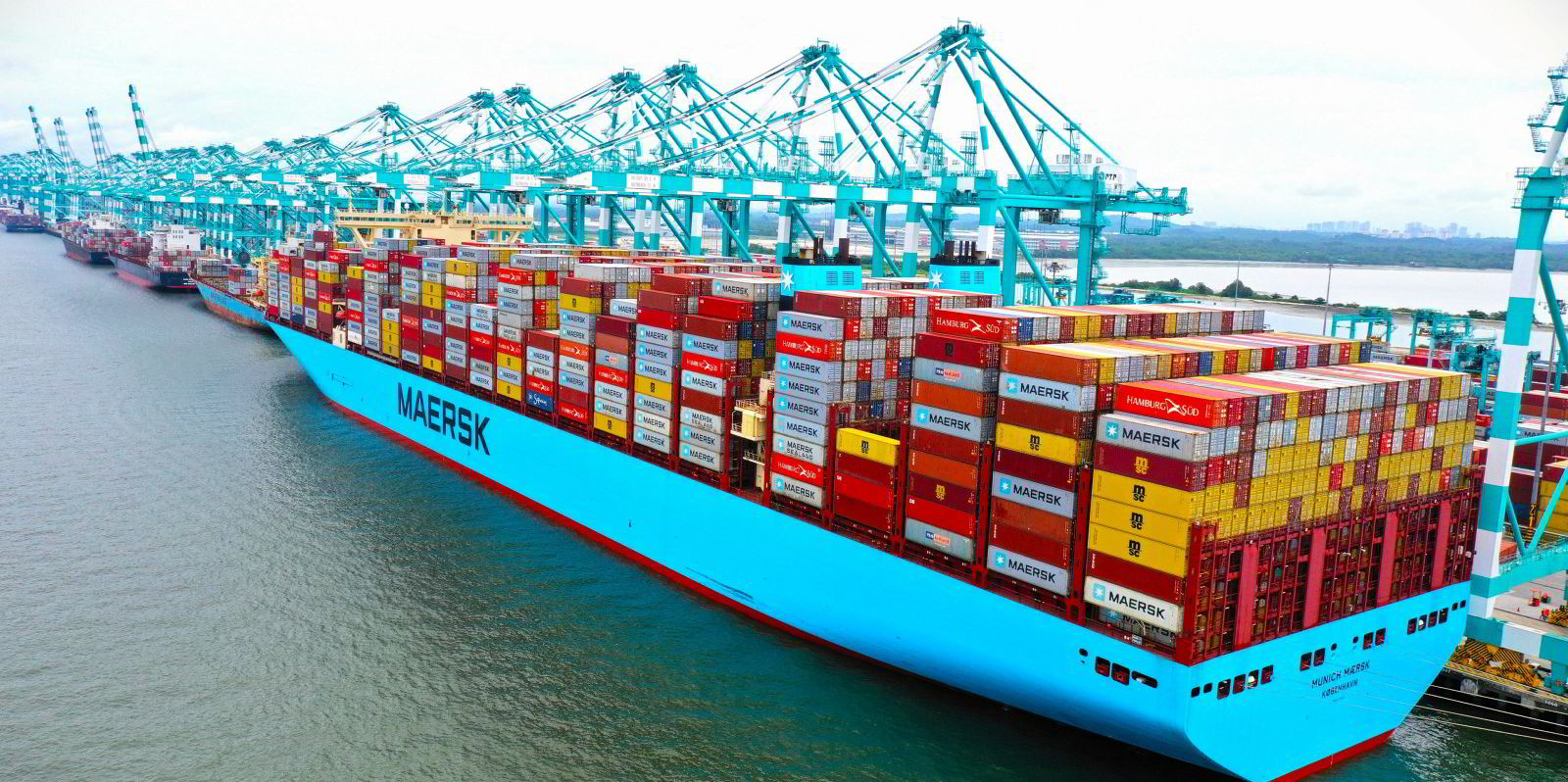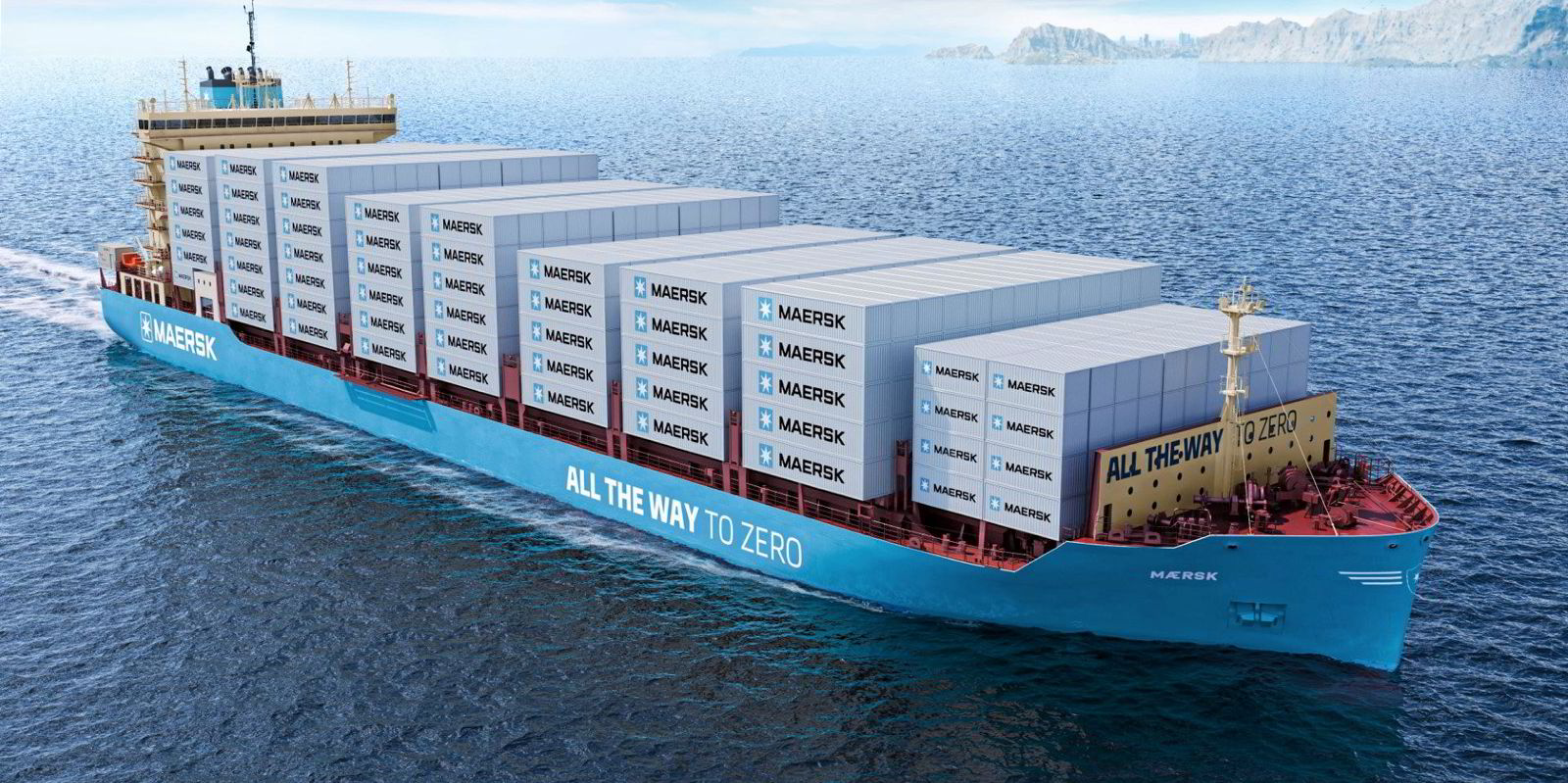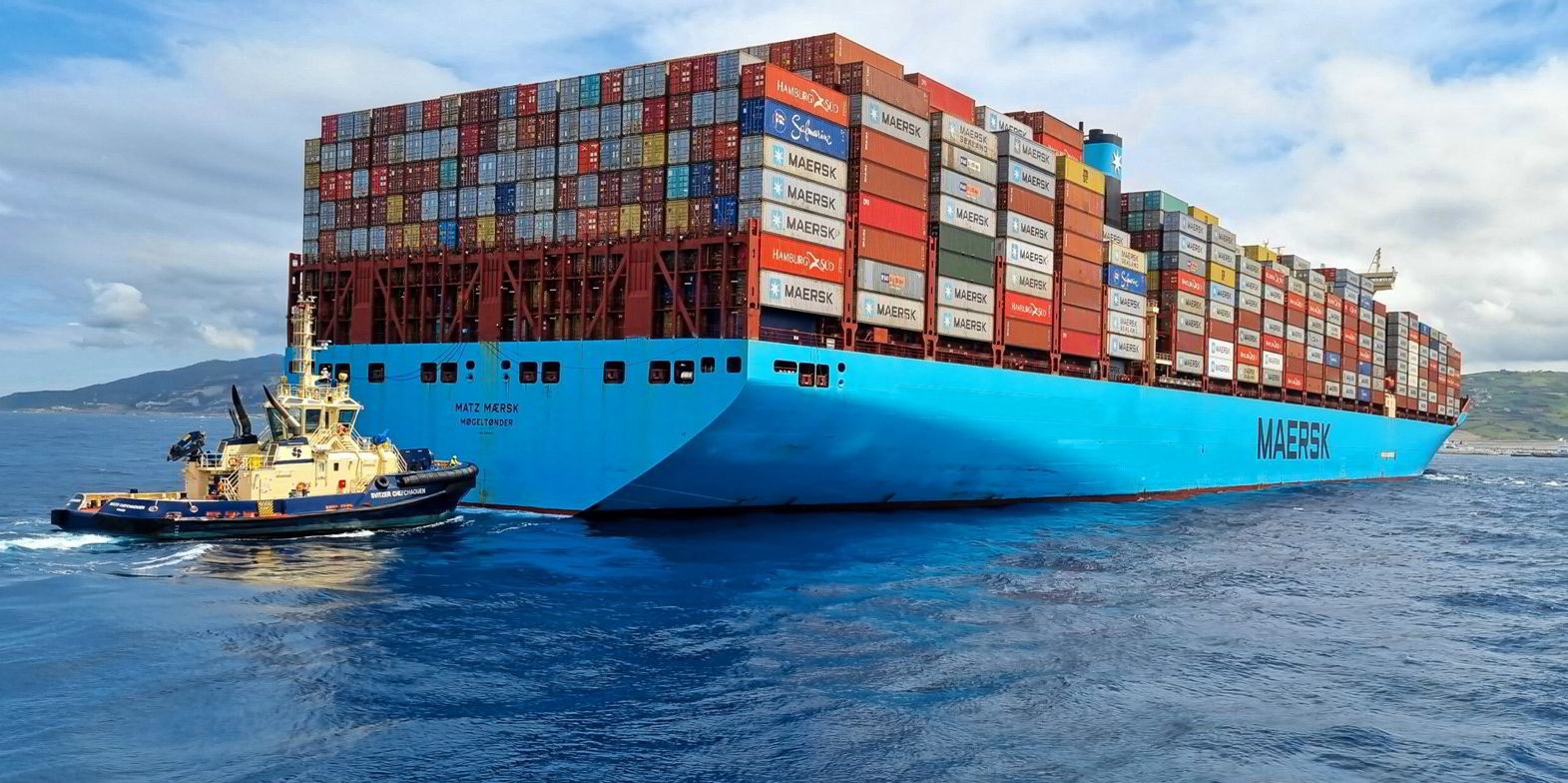Liner giant AP Moller-Maersk is braced for a potent cocktail of lower volumes and a higher supply of container ships.
The carrier is facing a “very challenging market” that could, if not managed well, result in liner companies making operational losses by year end.
The Copenhagen-based carrier has downgraded its forecast in global container growth to -4 % to -1% this year, compared with an earlier prediction of -2.5 to +0.5%.
The company sees container volumes retreating, as destocking of inventories continues longer than expected.
But the carrier is also worried about the massive supply of newbuildings and the reaction of carriers that have so far maintained market discipline.
The big X factor was what will happen to freight rates in the coming year, said chief executive Vincent Clerc.
“As we enter the second half of the year, we face the challenge of reduced volume growth expectation combined with expected new vessel delivery and higher capacity in the market,” Clerc told an earnings call on Friday.
“So far, the market has absorbed the higher capacity via better network planning and slower steaming.”
“Yet we are on the lookout for supply-side risk.”
Volume and freight rates have developed as anticipated, with inventory restocking continuing to be the primary driver for lower volumes, Clerc said.
“While the first half year has developed in line with our expectations, we do not see any sign of a volume rebound in the second half of the year,” he said.
Toolkit
Clerc said Maersk had employed “all the tools of dynamic capacity management” and resorted to its cost containment playbook.
But the massive orderbook was a problem that could, if carriers were not disciplined, push lines into loss-making territory.
“We know there is a large orderbook that will need to be phased in over 12 to 24 months,” said Clerc.
“It is clearly a problem, whether big or small, [and] one we don’t know yet.”
“We have seen quite a lot of discipline so far, but whether it continues or not is something we will have to see in the next couple of years.”
“Our expectation is a challenged environment for the next couple of years.”
“Whether you have quarters that go into negative territory when you are pretty close to breakeven, I think it’s possible. Whether it goes deep into that territory is everybody’s guess at this stage.”

Maersk this week raised its midpoint guidance for the full year, based mainly on the strong first half year.
Underlying Ebitda is forecast to come in at between $9.5bn and $11bn this year, compared with an earlier guidance at between $8bn and $11bn.
But the company could not predict the direction of freight rates, and chief financial officer Patrick Jany conceded negative Ebit could be implied in the weaker fourth quarter.
Decline
Maersk’s current guidance is for a prolonged period of volume decline with continued destocking.
The third quarter of the year is likely to be stronger than the year-end due to seasonal factors, although the fourth quarter and subsequent quarters could be quite weak, Jany said.
“The macro outlook is subdued,” Clerc said. “What that means is that the volume recovery is not going to be a double-digit rebound, once destocking has taken place. It will be modest,” he said.
“We expect to see some level of increased activity in the second half of the year in connection with the seasonal merchandise that has to move.”
Carriers had proven they were able to manage capacity as congestion has unwound and capacity has been released from ports over the past nine months, Clerc said.
“We’ve seen significant discipline across the industry from carriers, reflecting the fact there is lower demand. We expect this should continue but have to see how this fleshes out,” he added.
Maersk retains a 14% market share but would not reduce its fleet further if it makes financial sense, Clerc said.
The company reported a “robust” second quarter, but Clerc suggested the company would prioritise profitability over building market share.
Profit in the second quarter was better than expected but dropped to $1.48bn. That is sharply down from the extraordinary profit of $8.6bn in the same quarter last year.
Revenues dropped to $13bn, from $21.6bn in the previous corresponding period.






